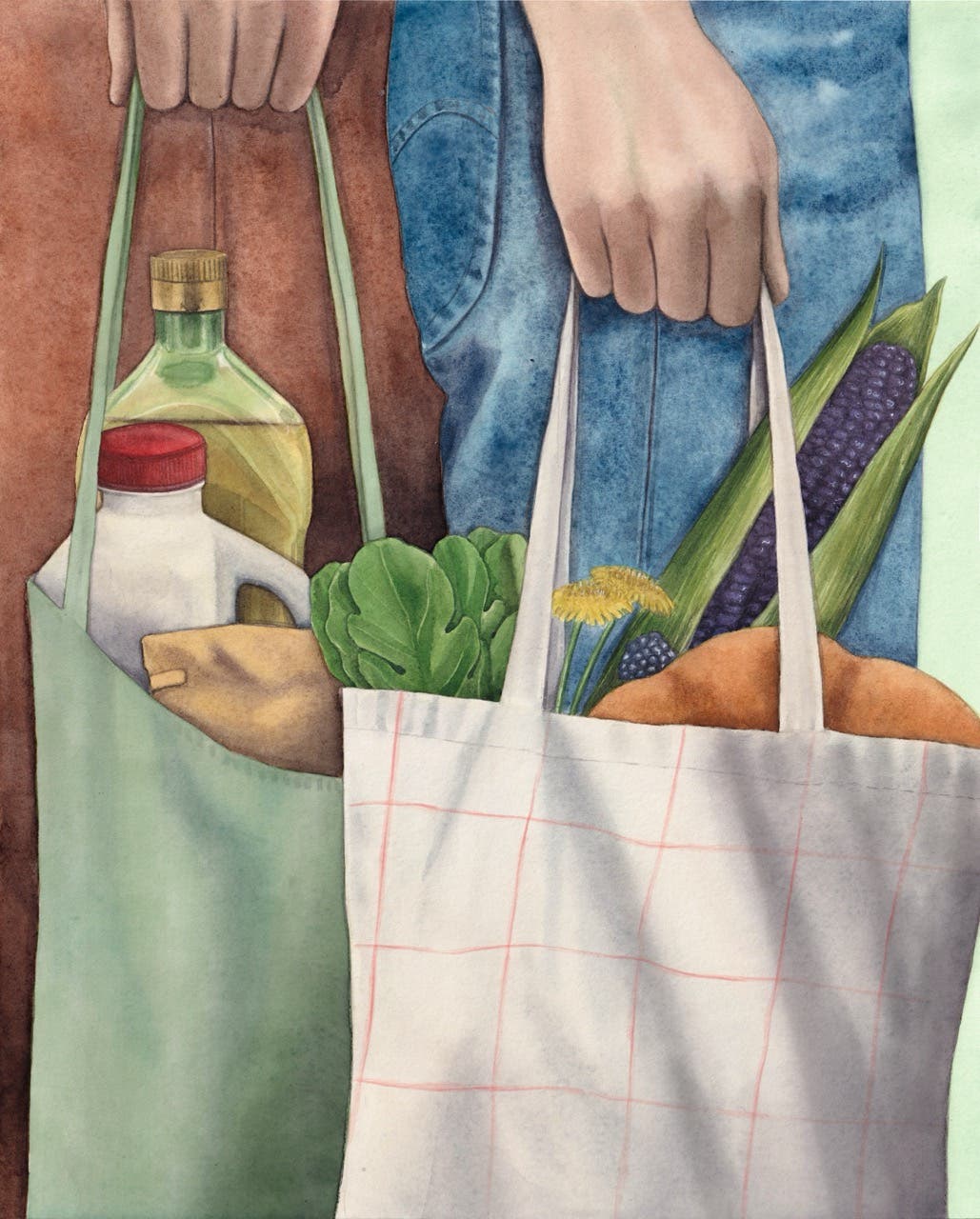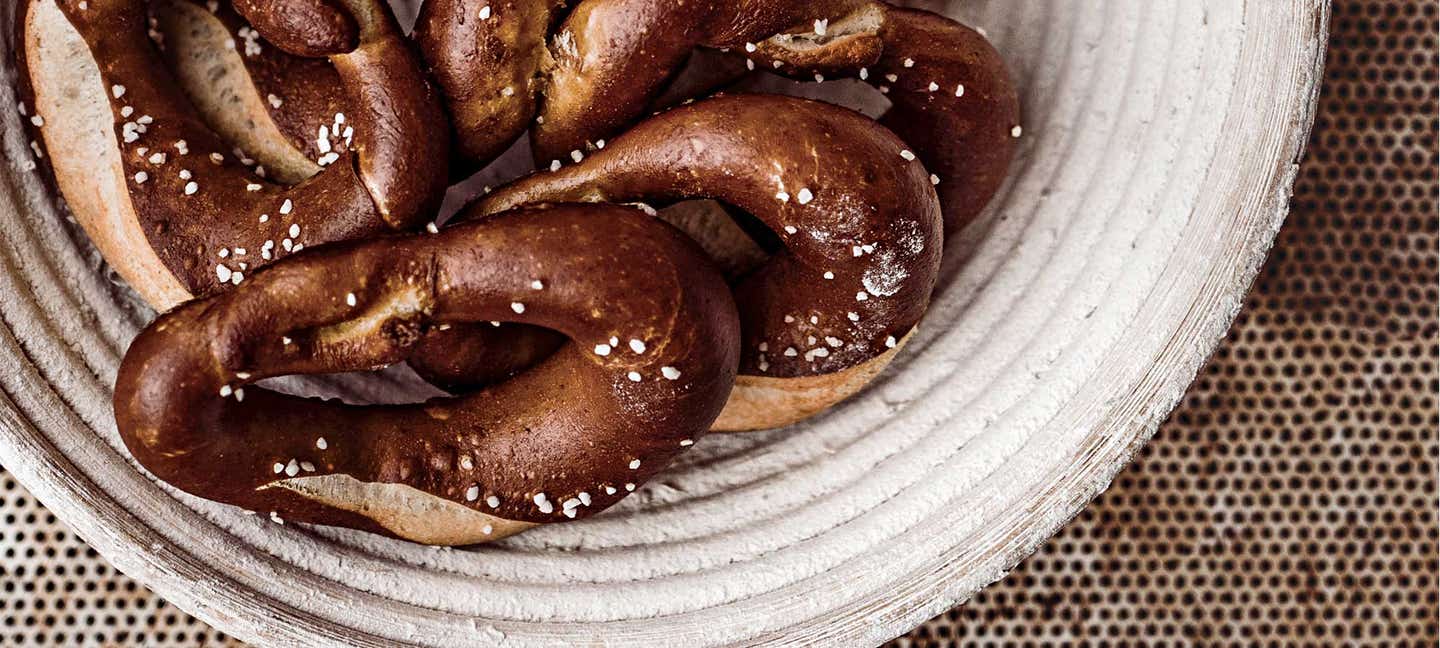
This German Baker Makes What May Be The World’s Best Pretzel
In the tiny Bavarian town of Dachsbach, Arnd Erbel bakes pretzels and pretzel breads the old-fashioned way
A few days before I visited baker Arnd Erbel in his southern German bakery, a Hamburg newspaper described him as a “bread god.” Erbel’s breads are renowned among baking connoisseurs and served in many of Germany’s best restaurants, but he was not comfortable with deification. “I’m not a bread god,” he told me in his bakery kitchen after I arrived. He sees himself more as bread’s humble servant: “My being is here to help with sourdough.” With his bald head and round glasses Erbel appears more monkish than almighty. It was fitting, then, that he was baking Breze (as they are called in Bavaria), German-style soft pretzels, a baked good that originated in European monasteries in the Middle Ages. While Americans tend to see soft pretzels as a simple snack eaten at ballparks or mall food courts, Germans cherish them as a national symbol. Pretzels were once so special that Medieval painters would dab a few on the table of the Last Supper, and for centuries, pretzel-shaped signs were the emblem of bakers and their guilds, hanging above doorways as a symbol that you could find fresh-baked breads inside. Today, you can find them at the counter of any German bakery or beer hall, but also around the world: No other German food item has traveled as far and wide as the pretzel. Erbel rolled 25 pretzels by hand, twisting them effortlessly into knots, like a school kid playing cat’s cradle, and left them to rise for two hours. He then put on rubber gloves to prepare to dunk each uncooked pretzel in lye, a strong and caustic alkaline solution that has the power to burn flesh. (Edward Norton’s hand in that grisly scene in Fight Club was lye at work.) The chemical evaporates from the pretzel’s surface in the oven, but not before speeding the Maillard reaction that gives so many foods their crust, aroma, and distinct flavor during cooking. In Germany, there is a whole family of baked goods with a smooth dark-brown crust known as Laugengebäck (literally, “lye bakes”). Erbel bakes some in his shop, like the Laugenstange, a long roll resembling an oversize cigar.
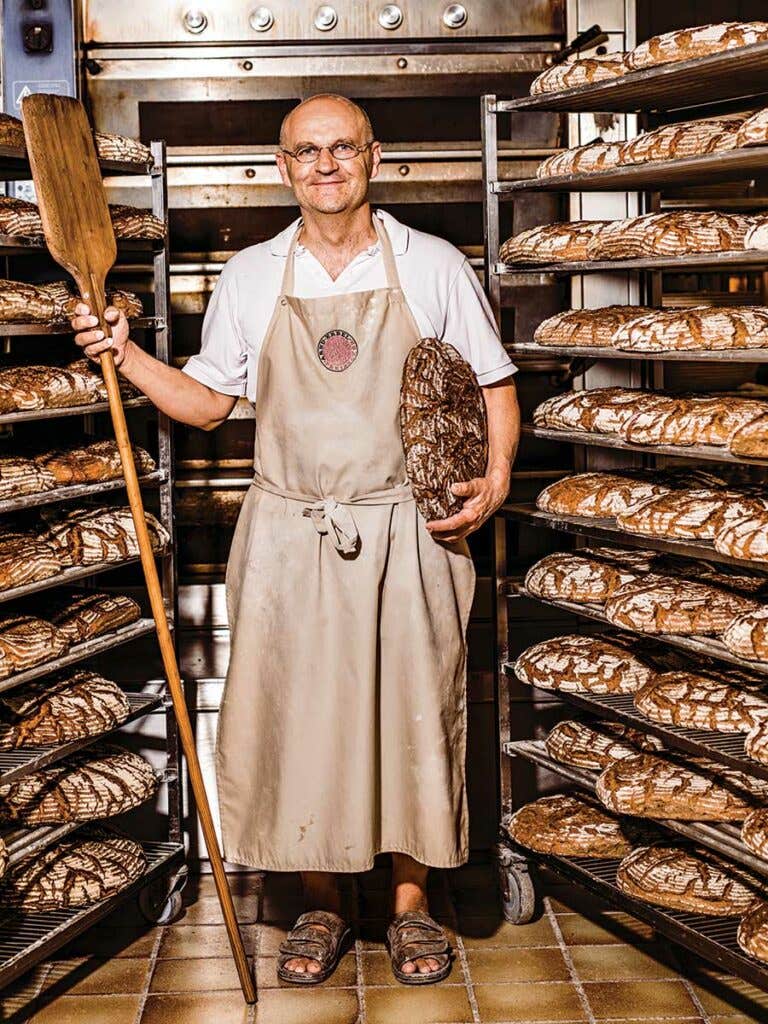
But the pretzel is the most famous Laugengebäck, and is the main reason Erbel keeps lye on hand. He carefully bathed the pretzels in the lye and scored their exteriors with a razor to allow the dough to expand in the oven. While baking, they turned a deep, even, and shiny brown as the scores expanded, creating a window into the doughy white centers. Erbel removed them with a wooden peel after 12 minutes and dusted them with salt.
Experiencing the sudden transition from thin, firm crust to chewy interior is one of the pleasures of biting into a pretzel. My teeth broke through the crust and sank into the pillowy middle as the salt dissolved on my tongue. The flavor was mild, but the texture was singular—a fact that makes Erbel proudest, since he does not use baker’s yeast, relying instead on the natural fermentation typically used in sourdough baking. “If you go to another baker and say, ‘I had a pretzel without yeast,’ they will say, ‘Impossible,’” he said. But through the careful manipulation of natural leavening, Erbel not only makes pretzels, but also dozens of different German breads and delicate specialties, such as croissants, stollen, and focaccia, without using packaged yeast and without any overly sour flavors developing.
Erbel’s skills and commitment to an older way of doing things have earned him a reputation well beyond German borders. “Arnd Erbel is really a bread artist,” Dan Leader, the James Beard Award–winning founder of New York bakery Bread Alone, told me before I arrived. “His breads are as unique as his fingerprints.” Erbel’s loaves are special enough that German and other European chefs order them rather than buying bread from more-local bakeries. He ships potato rolls with olives to Luce D’Oro, a Michelin-starred restaurant in Bavaria, and 10-pound sourdoughs to Steinbeisser, a company that stages pop-up dinners in Amsterdam. Though he is often described as a traditional baker, Erbel was enthusiastic about experimenting with Christian Scharrer of Courtier, a two-star restaurant on the Baltic Sea, for whom he baked green bread using dried algae.
The pretzel is simple by comparison, but in one major way more special than any of those other breads: It has a shelf life of just five or six hours, which means Erbel sells them only at his bakery in Dachsbach, a village of just 700 people, and at a small shop he keeps in a neighboring town.
Few subjects rouse German pride quite like baking. The country claims to produce more than 3,000 varieties of bread. If you had to broadly categorize them, typical German loaves are dark, sour, dense, and moist almost to the point of water-logged. The robustness of most German bread comes from rye, which grows better than wheat in the country’s damp and cool climate. “When you talk to a German baker, even if there is wheat in the bread, they talk about the wheat in relation to rye,” Leader says. “Whereas anyplace else in Europe, they talk about other ingredients in relation to wheat.”
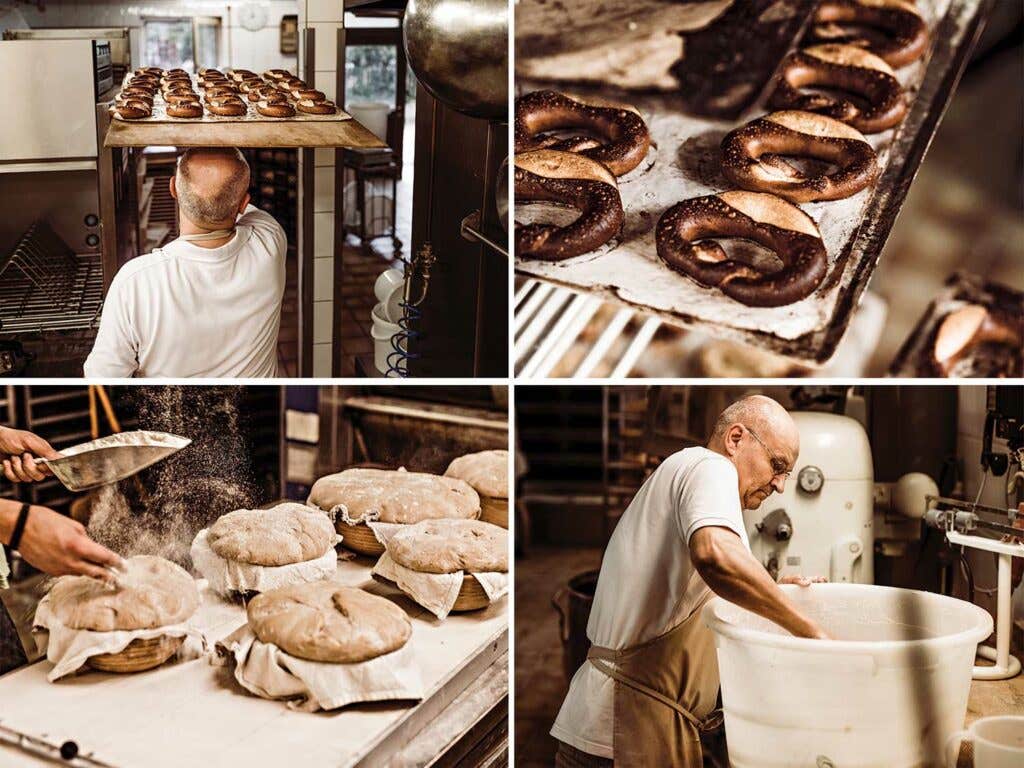
One of the few things Germans love more than their bread is paying as little for it as possible. Germans have a reputation for extreme thriftiness when it comes to food, and rock-bottom discount-grocery chains such as Aldi and Lidl have grown to dominate the German food market. (They have also aggressively exported this model around Europe and into the States. Trader Joe’s? That’s the Germans.) Because Germany’s grocery stores, discount stores, and gas stations now offer a remarkable variety of mass-produced, inexpensive loaves, German craft bakeries have declined in number, and many that remain have slashed prices by mass-producing breads with pre-mixes, preservatives, and industrial machines to save money and time. Most Aldi Süd grocery stores now feature a machine that can bake a variety of breads at the press of a button. As a result of the cultural shift, actual German bakers using traditional methods with unadulterated ingredients are becoming an endangered species.
“The Germans always talk about their wonderful German bread culture, but I cannot see it,” Erbel told me. Earlier in the day, he had picked me up at the train station, and driven past a large building and parking lot just outside the town. “You can see here the Edeka Markt,” Erbel said, indicating the local branch of one of the country’s major grocery stores. “I have never gone inside. It’s not my world.”
We drove into Dachsbach, a small village of half-timber homes with steeply pitched roofs. Erbel is the 12th generation of his family to run the bakery, and Dachsbach has hardly changed since his ancestors set up shop in 1680. Its cobblestone streets see scarcely any traffic, and, although a medieval fortress stands at its edge, the Bäckerei Erbel is the main attraction. People flock there every morning for bread, and Erbel has apprenticed bakers from as far away as Japan.
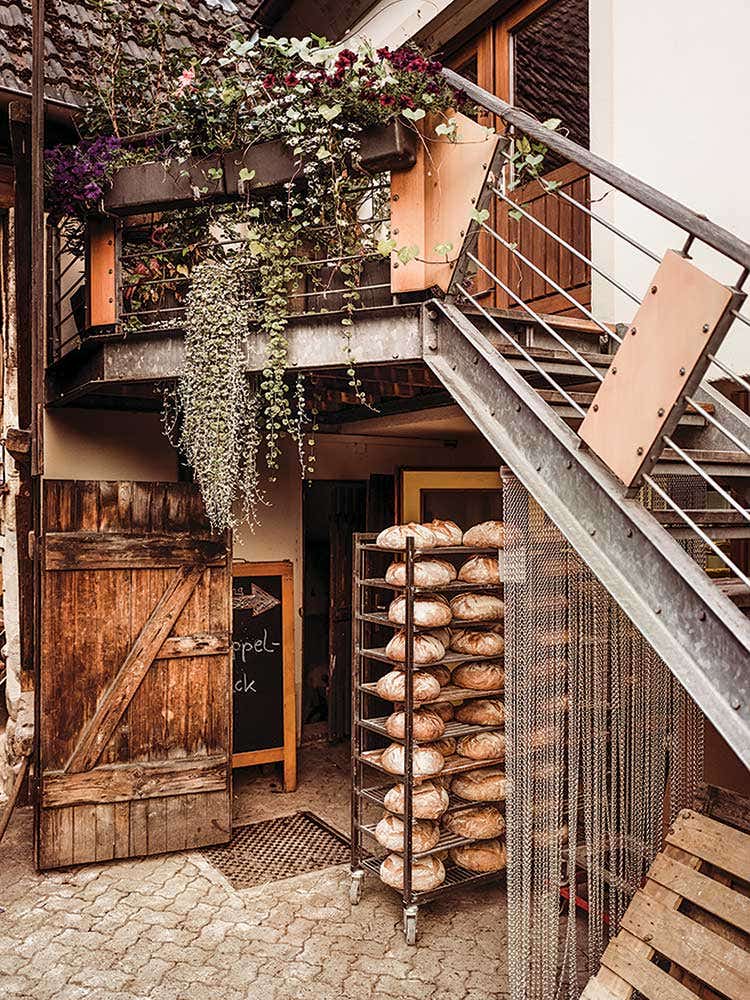
The bakery is a plain rectangular building that you enter through a side alley. The first floor has a small shop and a large, T-shaped kitchen; the upper floors are where Erbel’s family have lived for more than 300 years. Erbel lives with his wife and daughter in the same apartment where he grew up. He learned the basics of baking from his father at a time when bakers were eager for new ingredients to maximize the yield from their doughs and extend the shelf lives of their breads. Erbel always liked it, though, when his father forgot to mix the additives into the dough. “Then the rolls were small,” Erbel remembered. “Those were the best.”
Erbel worked in several bakeries around Nuremberg, but he left Germany to learn about other baking traditions. He trained for his master’s degree in baking in Vienna, a melting pot of European and Asian influences famous for extravagant tortes and sweets. (“We make a sachertorte at its best,” he told me in Dachsbach, referring to the iconic Viennese chocolate cake.) After Vienna, he lived in northern Italy. There, he learned to bake the naturally leavened sweet bread panettone. It was this, more than any of his earlier experiences in Germany, that opened his eyes to the possibilities of sourdough. He realized that a “sourdough” did not actually need to taste sour, that the same process of natural fermentation (using wild yeasts from the environment) could be manipulated to produce virtually any bread—with a more interesting flavor but without the pronounced tang. “The pretzel without added yeast is more similar to panettone than to German rye bread,” Erbel told me.
The most important thing when making a non-sour sourdough, he said, was to keep the dough at a temperature of around 80 degrees, but it was clear even as he said this that he was attuned to aspects of the dough that could not be measured with a thermometer. If you ask Erbel for a recipe, for instance, he will tell you only that it is important to use precisely the right amount of salt—every other ingredient depends on more-subjective factors, such as the climate. “It’s not the recipe,” he told me. “It’s the way.”
His penchant for improvisation means Erbel’s pretzel is not as traditional as it might seem. He makes several tweaks to the traditional pretzel formula, using oil in the dough instead of pork fat so vegetarians and vegans can enjoy it. He mixes some fine-milled whole-grain spelt with the wheat flour in order to speed the natural fermentation and add some nutritional value. Though he makes them both ways, he will dust his pretzels with a mixture of flour and fine salt after baking, rather than sprinkling them with coarse salt, because it tastes just as salty without making you so thirsty. And while he always ties some of his pretzels in the traditional knot, with the little “arms” crossed through the middle, he prefers to roll the pretzel into a rope that tapers at its ends, and then join the ends together in a loop.
These little tweaks preserve what was best about a pretzel while also making it distinctly Erbel’s own. His goal is not so much reinvention as it was reclamation: He wants to remind Germans—used to the oversize, machine-rolled versions for sale at beer halls and gas stations—how good, exactly, a pretzel could be.
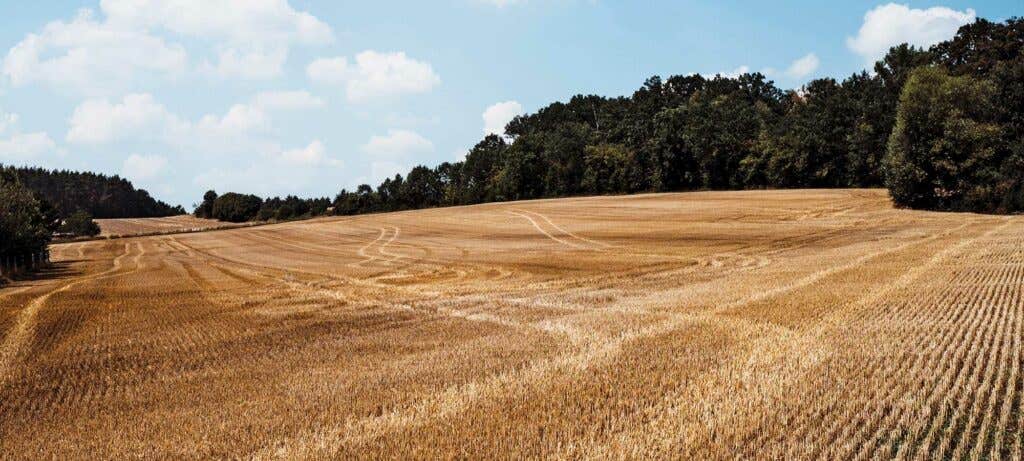
When Erbel took over the Bäckerei Erbel from his father, in 1999, he banished convenience products and industrial ingredients such as food coloring and artificial sweeteners from the recipes. He mills flour himself from local fields, and refuses to bake with pre-mixes, additives, or preservatives, which he compares to doping in bicycle racing. His diktat against baking with chemicals, however, makes an exception for lye, which is an old tradition, and without which there could be no pretzel. No one is quite certain how it came into use.
“I’m sure it was an accident,” Erbel said. Households in the Middle Ages used lye derived from cooking ash as a cleaning solution, and one legend credits a tired baker who mistakenly dipped dough into lye instead of sugar, and did not discover his mistake until he pulled it from the oven and saw the beautiful brown crust.
Nowadays, some German bakers run wild with Laugengebäck. It is common, for instance, to find Laugencroissants in German bakeries—croissants that have been dipped in lye and have a salty brown exterior like a pretzel. Erbel shudders at the Laugencroissant, though, seeing it as an unholy Frankenstein's monster: "I make croissants with the wonderful taste of butter."
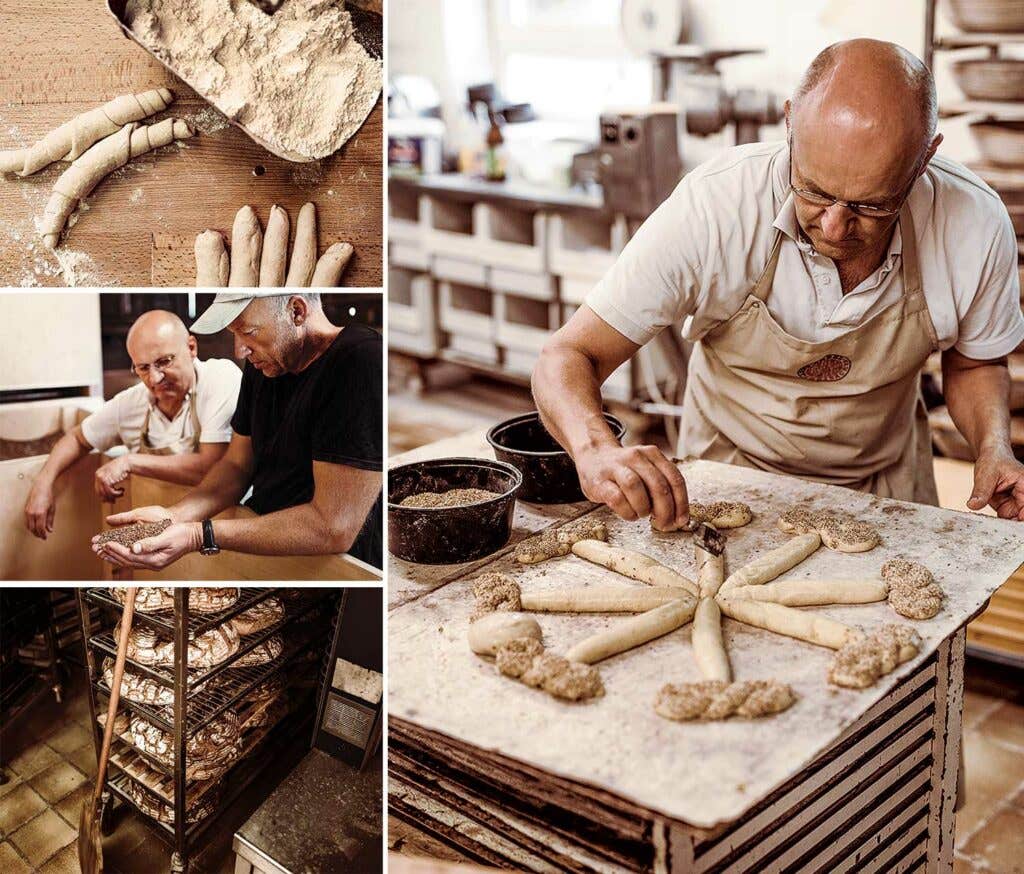
Erbel keeps the lye by the oven in a long shallow tub with a grate suspended overhead. He laid some more uncooked pretzels on the grate, then lowered it into the chemical for a few seconds before transferring the pretzels to the oven. Though we had discussed going to a beer garden to eat, he suggested instead we have the fresh pretzels with some cheese he had been given by a friend, who had skied through the Alps, purchasing only cheeses that had been made from the milk of cows with horns—which, apparently, some people find easier to digest.
We walked out the back of the bakery kitchen and across a cobblestone courtyard, then through a shed to another cobblestone courtyard behind a former beer garden that Erbel owns and now uses to host art exhibitions and parties. Erbel opened two bottles of beer—which, he said apologetically, were from Düsseldorf rather than local—and we spread butter on the pretzels and cut into the cheese.
The pretzels broke with a satisfying snap to reveal an interior that was plush, almost like a marshmallow. Their little crystals of salt brought out the mild and grassy flavors of the cheese. As the sun set, it became so dark that it was difficult to see Erbel across the table. We were just a few steps from the rooms where he had grown up. He told me that colleagues had tried to persuade him to open bakeries in Berlin, Munich, and London, but he has no desire to relocate closer to the Michelin-starred restaurants he bakes for. He’s happy to stay in Dachsbach, he said. “They can’t imagine what we are doing here.”
Keep Reading
Continue to Next Story









